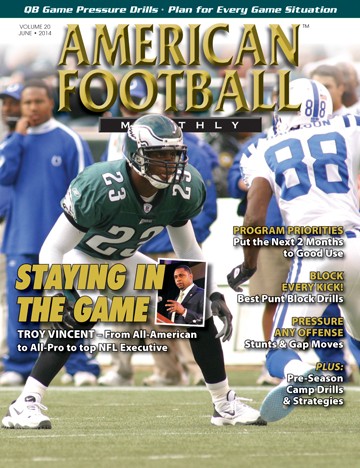Article CategoriesAFM Magazine
|
Speed Report: Football Movement Training – Complete Before the Seasonby: Dale BaskettFootball Speed Specialist © More from this issue Many sports require a variety of movement and speed changes. However, football has a greater challenge performance-wise than other sports due to the immense contact that is a part of the game. Other sports don’t endure the physicality like football. Good movement control is the backbone of football speed. What marks outstanding skill performance is not solely the level of an athlete’s talent but the level of movement skill ability that accompanies the athlete’s natural ability. Every athlete on your team can and should develop quality movement skills, regardless of their talent level.
|
|
|||||||
| HOME |
MAGAZINE |
SUBSCRIBE | ONLINE COLUMNISTS | COACHING VIDEOS |
Copyright 2025, AmericanFootballMonthly.com
All Rights Reserved





